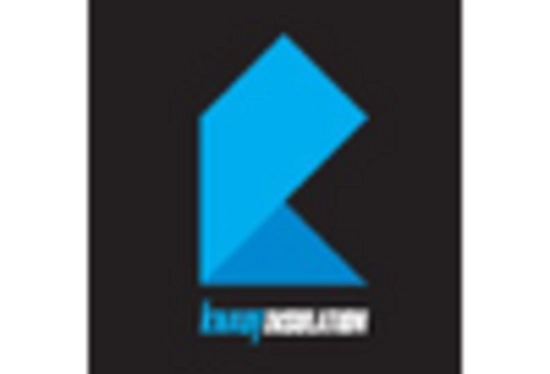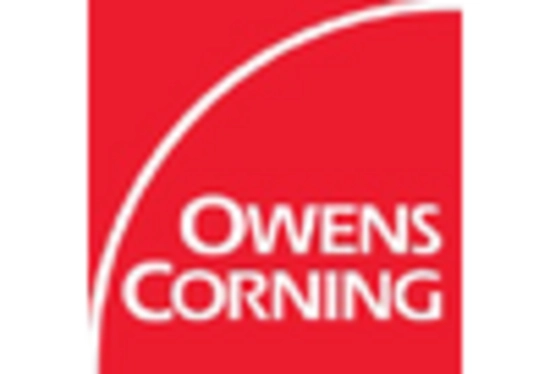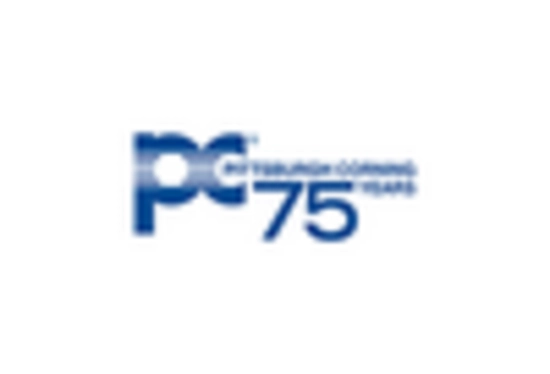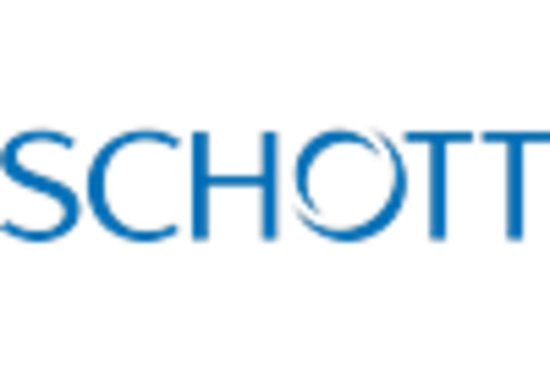Rising Urbanization
Rising urbanization is a significant driver for the Foam Glass Market. As urban areas expand, the demand for construction materials, particularly those that offer insulation and sustainability, is on the rise. Urbanization trends indicate that by 2050, nearly 68% of the world's population will reside in urban areas, leading to increased construction activities. This surge in demand is likely to propel the foam glass market, as builders and architects seek materials that meet modern energy efficiency standards. The foam glass segment is well-positioned to capitalize on this trend, potentially increasing its market share in the construction sector as urbanization continues to reshape landscapes.
Diverse Application Areas
The Foam Glass Market benefits from its diverse application areas, which span across construction, automotive, and packaging sectors. In construction, foam glass is utilized for insulation, lightweight fill, and as a drainage material, contributing to energy efficiency and structural integrity. The automotive sector is increasingly adopting foam glass for lightweight components, enhancing fuel efficiency. Additionally, the packaging industry is exploring foam glass for its protective qualities. This versatility is reflected in the market's projected growth, with estimates suggesting an increase in demand by 5% annually. Such diverse applications not only expand the market reach but also mitigate risks associated with reliance on a single sector.
Technological Innovations
Technological advancements play a pivotal role in shaping the Foam Glass Market. Innovations in manufacturing processes have led to improved product quality and performance. For instance, advancements in thermal insulation properties have made foam glass a preferred choice in energy-efficient building designs. The market is witnessing a surge in research and development activities aimed at enhancing the material's properties, such as fire resistance and durability. As a result, the foam glass segment is expected to capture a larger share of the insulation market, which is projected to reach USD 60 billion by 2027. This growth underscores the importance of continuous innovation in maintaining competitiveness within the foam glass sector.
Sustainability Initiatives
The Foam Glass Market is increasingly influenced by sustainability initiatives. As environmental concerns rise, industries are seeking eco-friendly materials. Foam glass, being recyclable and made from abundant raw materials, aligns well with these initiatives. The demand for sustainable construction materials is projected to grow, with the foam glass segment expected to witness a compound annual growth rate of approximately 6% over the next few years. This trend indicates a shift towards materials that minimize environmental impact, thereby enhancing the appeal of foam glass in various applications. Furthermore, regulatory frameworks promoting sustainable practices are likely to bolster the market, as companies strive to meet compliance standards while appealing to environmentally conscious consumers.
Government Regulations and Incentives
Government regulations and incentives are increasingly shaping the Foam Glass Market. Many governments are implementing policies aimed at promoting energy efficiency and sustainable building practices. These regulations often encourage the use of materials like foam glass, which offer superior insulation properties and lower environmental impact. Incentives such as tax breaks for using sustainable materials can further stimulate demand. As governments worldwide prioritize sustainability in construction, the foam glass market is likely to experience growth. The alignment of foam glass with regulatory frameworks not only enhances its market potential but also positions it as a key player in the transition towards greener building solutions.

















Leave a Comment